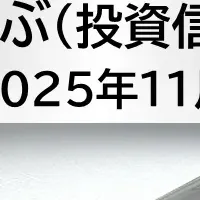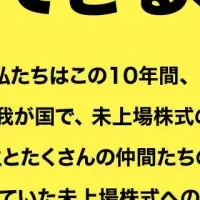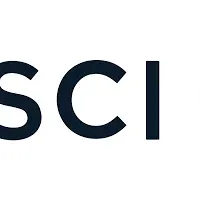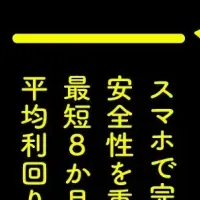
Surge in Rule 10b-5 Private Securities-Fraud Litigation Hits a Record in Late 2024
In an unsettling revelation for investors, the latest Securities Class Action Rule 10b-5 Exposure Report published by SAR, a specialized data analytics firm focusing on securities litigation risks for U.S. public companies, indicates that the last quarter of 2024 marked a dramatic peak in litigation linked to Rule 10b-5. This significant uptick is attributed to increased market volatility and stringent scrutiny from shareholders, coinciding with a year of rising equity markets in the United States.
The report highlights that investors reported approximately $665.2 billion in market cap losses due to alleged Rule 10b-5 violations during this bullish period, making it the highest figure recorded in the past five years. This surge reflects broader market trends, where financial stakes have heightened amid a climate of investor activism and heightened expectations regarding corporate disclosures.
Further analysis from SAR shows that the quarterly securities litigation exposure saw a 17% increase compared to the previous year’s average, suggesting a significant escalation in the frequency and severity of legal actions faced by public companies. In fact, settlements reached with investors averaged 23% more than any time in the last six years, underscoring an alarming trend as companies grapple with rising litigation costs.
Focusing specifically on the second half of 2024, U.S. public companies faced an exposure estimated at around $380.3 billion. Each securities class action filing contributed to approximately $4.0 billion in market valuation claims, a notable 32.1% increase from the preceding periods. Additionally, stocks linked to alleged fraud experienced average drops of roughly $2.0 billion, marking a 15.4% rise.
Anthony Kabanek, Executive Vice President at SAR, commented on these findings, stating, "Our data and analyses indicate that securities litigation exposure against U.S. public companies peaked in the fourth quarter of last year. However, this peak may prove to be short-lived, as increasing market volatility and additional pressures on U.S. equities come into play leading into 2025. Given the substantial size of Rule 10b-5 settlements in 2024, we anticipate a surge in litigation activity this year."
A notable aspect of the report is its emphasis on the varying impact across market capitalizations. In the second half of 2024, a total of 86 U.S. issuers faced litigation on allegations of violating Rule 10b-5. Of these, the exposure among large-cap companies stood at $233.7 billion, which saw a decline of about 10.1% from prior half, while mid caps saw a significant rise in litigation exposure reaching $19.8 billion, dwarfing the prior semi-annual figures. Small caps, on the other hand, experienced a decrease to $5.9 billion in exposure, a 33% drop compared to the first half of 2024.
In addition, non-U.S. issuers trading under American Depositary Receipts (ADRs) faced litigation exposure of approximately $120.9 billion during the same timeframe, a staggering jump of 11.3 times the previous half, highlighting the extended reach of U.S. market regulations beyond domestic borders.
The report’s findings underscore a critical observation: while the frequency of litigation filings remained stable, the potential loss severity saw a dramatic increase, with global exposure climbing by approximately 34% in the latter half of 2024 compared to the former half. This disparity between filing frequency and exposure severity calls for careful monitoring by both investors and public companies moving forward.
As market dynamics continue to evolve and investor activism grows, stakeholders must be increasingly vigilant in navigating the complexities of securities litigation. The implications are clear: a proactive approach to regulatory compliance and transparent disclosures could make a significant difference in mitigating risks associated with Rule 10b-5 violations.
The report highlights that investors reported approximately $665.2 billion in market cap losses due to alleged Rule 10b-5 violations during this bullish period, making it the highest figure recorded in the past five years. This surge reflects broader market trends, where financial stakes have heightened amid a climate of investor activism and heightened expectations regarding corporate disclosures.
Further analysis from SAR shows that the quarterly securities litigation exposure saw a 17% increase compared to the previous year’s average, suggesting a significant escalation in the frequency and severity of legal actions faced by public companies. In fact, settlements reached with investors averaged 23% more than any time in the last six years, underscoring an alarming trend as companies grapple with rising litigation costs.
Focusing specifically on the second half of 2024, U.S. public companies faced an exposure estimated at around $380.3 billion. Each securities class action filing contributed to approximately $4.0 billion in market valuation claims, a notable 32.1% increase from the preceding periods. Additionally, stocks linked to alleged fraud experienced average drops of roughly $2.0 billion, marking a 15.4% rise.
Anthony Kabanek, Executive Vice President at SAR, commented on these findings, stating, "Our data and analyses indicate that securities litigation exposure against U.S. public companies peaked in the fourth quarter of last year. However, this peak may prove to be short-lived, as increasing market volatility and additional pressures on U.S. equities come into play leading into 2025. Given the substantial size of Rule 10b-5 settlements in 2024, we anticipate a surge in litigation activity this year."
A notable aspect of the report is its emphasis on the varying impact across market capitalizations. In the second half of 2024, a total of 86 U.S. issuers faced litigation on allegations of violating Rule 10b-5. Of these, the exposure among large-cap companies stood at $233.7 billion, which saw a decline of about 10.1% from prior half, while mid caps saw a significant rise in litigation exposure reaching $19.8 billion, dwarfing the prior semi-annual figures. Small caps, on the other hand, experienced a decrease to $5.9 billion in exposure, a 33% drop compared to the first half of 2024.
In addition, non-U.S. issuers trading under American Depositary Receipts (ADRs) faced litigation exposure of approximately $120.9 billion during the same timeframe, a staggering jump of 11.3 times the previous half, highlighting the extended reach of U.S. market regulations beyond domestic borders.
The report’s findings underscore a critical observation: while the frequency of litigation filings remained stable, the potential loss severity saw a dramatic increase, with global exposure climbing by approximately 34% in the latter half of 2024 compared to the former half. This disparity between filing frequency and exposure severity calls for careful monitoring by both investors and public companies moving forward.
As market dynamics continue to evolve and investor activism grows, stakeholders must be increasingly vigilant in navigating the complexities of securities litigation. The implications are clear: a proactive approach to regulatory compliance and transparent disclosures could make a significant difference in mitigating risks associated with Rule 10b-5 violations.
Topics Financial Services & Investing)










【About Using Articles】
You can freely use the title and article content by linking to the page where the article is posted.
※ Images cannot be used.
【About Links】
Links are free to use.